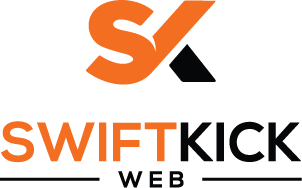ADA Compliance for E-Commerce: Ensuring Your Website Is Accessible to All
In the digital world, inclusivity extends beyond the physical world to the virtual spaces where we shop, learn, and connect. ADA compliance for e-commerce is not just about adhering to regulations; it's about opening your digital storefront to everyone, regardless of their abilities. As a senior developer, I've seen the profound impact that an accessible website can have. Let's explore the crucial aspects of ADA compliance for online stores.
The Significance of ADA Compliance
The Americans with Disabilities Act (ADA) sets forth guidelines to ensure that businesses and public spaces are accessible to individuals with disabilities. While traditionally applied to physical locations, these guidelines have been increasingly interpreted to include digital spaces, including e-commerce websites. Ensuring ADA compliance is not only a moral imperative but also a legal one, as non-compliance can lead to costly lawsuits and damage to your brand's reputation.
Practical Tips for Meeting Accessibility Standards
Conduct an Accessibility Audit
Begin by auditing your site to identify potential barriers for people with disabilities. Tools like the Web Content Accessibility Guidelines (WCAG) provide a framework for making web content more accessible.
Provide Text Alternatives
All non-text content, such as images, should have text alternatives. This ensures screen readers can convey the information to users who are visually impaired.
Ensure Website Navigation is Keyboard-Friendly
Your website should be navigable using a keyboard alone, allowing users with motor disabilities to access all features.
Create Content with Readable Fonts and Sufficient Contrast
Text content should be easy to read, with resizable text, high contrast between the background and the text, and a clear font to accommodate users with visual impairments.
Include Descriptive Link Text
Avoid vague link descriptions like "click here." Use meaningful text that provides context for the link destination, aiding in navigation and comprehension for users who rely on screen readers.
Use ARIA Landmarks
Accessible Rich Internet Applications (ARIA) landmarks help screen reader users understand the layout and navigate more efficiently by defining regions of the page.
Offer Closed Captioning and Transcripts
For multimedia content, provide closed captioning for videos and transcripts for audio to assist users who are deaf or hard of hearing.
Ensure Forms are Accessible
Label form elements clearly, and provide instructions and error messages to guide users through the process of completing and submitting forms.
Regularly Update Your Accessibility Features
ADA compliance is not a one-time task. Regularly review and update your site to ensure it continues to meet accessibility standards as technologies and guidelines evolve.
The Legal Implications of Non-Compliance
Ignoring ADA compliance can result in legal consequences, including lawsuits and financial penalties. Moreover, non-compliance can alienate a significant portion of the market. People with disabilities represent a sizable and growing user base, and ensuring their access is not only legally required but also a sound business strategy.
Embracing ADA compliance is integral to building an inclusive e-commerce experience. It demonstrates your commitment to serving all customers and ensures that your online store is welcoming and accessible to the widest possible audience.
At Swiftkick Web, we pride ourselves on developing e-commerce solutions that are accessible to all. We understand the nuances of ADA compliance and are dedicated to building websites that meet these essential standards. If you're looking to ensure your e-commerce platform is fully accessibleand compliant with ADA guidelines, let us guide you through the process, creating a space that's open to everyone and fortified against legal risks. Reach out, and together, we'll pave the way for a truly inclusive digital shopping experience.
